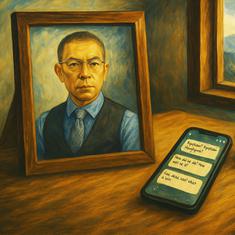The 2014 football World Cup in Brazil was kicked off not by a superstar of the game but by a paraplegic who had lost the use of his legs in a car accident. The 29-year-old man was suited up in an robotic exoskeleton developed by The Walk Again project, an international collaboration working on brain-machine interfaces that can help people with spinal cord injuries regain control over their movements.
The Walk Again Project has published its first paper in the journal Scientific Reports last month, with some surprising results. Their studies have shown that with sustained long-term training, paraplegics can regain some function in their damaged limbs.
People who have been diagnosed with spinal injuries and resultant loss of mobility in their limbs are usually restricted to using wheelchairs. The Walk Again Project worked with eight patients with such spinal injuries and mapped their brains using electroencephalography, or EEG. The patients were put in virtual reality scenarios where they had to imagine movements of their own bodies. They received tactile feedback from the computer in response to their imagined movements.
The patients were then trained to walk on a treadmill while using a robotic brace and suspended by a harness. They then repeated the treadmill exercise while in a brain-controlled exoskeleton, with which they could move their legs.
After 12 months of training, all eight patients reported sensations like pain localization, crude touch, and sensing positions in parts of their limbs – all signs of neurological improvements. They also regained some voluntary motor controls in key muscles. As a result, 50% of the participants in the study were upgraded from being complete paraplegics to a classification of incomplete paraplegia.
The researchers of The Walk Again Project are hopeful that this indicates that consistent long-term training of brain machine interfaces along with other therapies can help restore nerve and muscle functions of damaged spinal cords.










